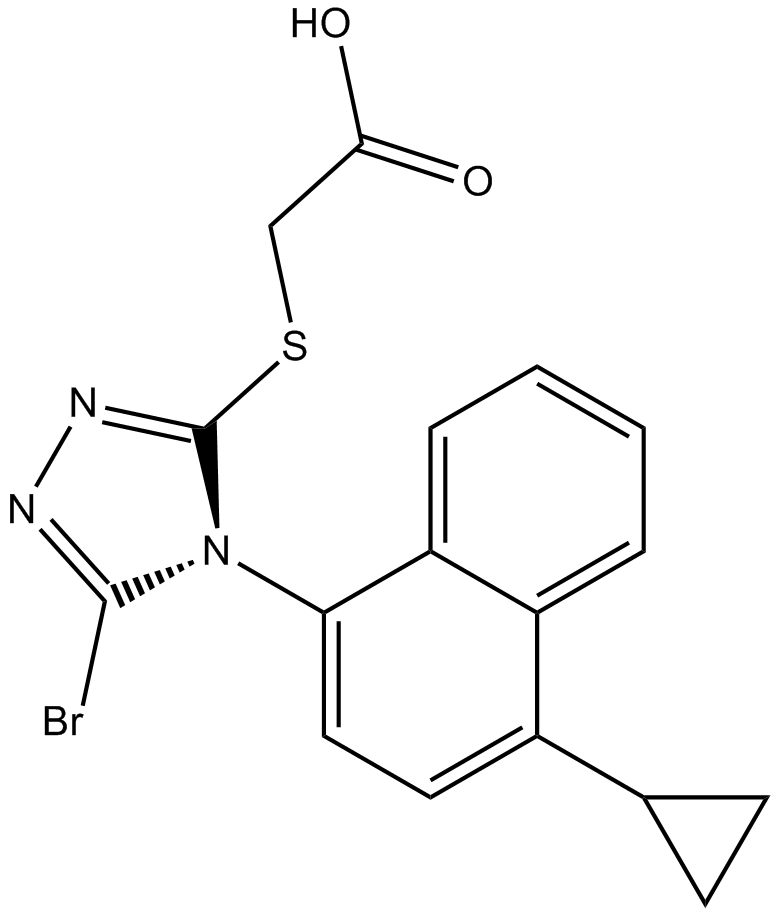Lesinurad |
| Catalog No.GC15440 |
A URAT1 inhibitor
Products are for research use only. Not for human use. We do not sell to patients.

Cas No.: 878672-00-5
Sample solution is provided at 25 µL, 10mM.
Lesinurad is an inhibitor of URAT1 that promoting renal uric acid excretion [1].URAT1 is a transporter in the kidney that regulates uric acid excretion from the body [2].
In the clinical study, lesinurad potently inhibit URAT1 as well as OAT4, another transporter responsible for the renal resorption of urate. In a study, 21 people with hyperuricemia or gout (sUA >= 8.0 mg/dL) were randomized to lesinurad, open-label allopurinol or placebo. Most of the lesinurad-treated patients had sUA < 6 mg/dL after seven days, which were the same effect to patients receiving allopurinol and better than placebo. Also, Lesinurad showed well tolerated in the study [2]. Compared with probenecid, whose efficacy is reducing patients with renal insufficiency, lesinurad may be effective in patients with mildly impaired renal function [1].
References:
[1]. Crittenden DB, Pillinger MH. New therapies for gout. Annu Rev Med, 2013, 64: 325-337.
[2]. Singh JA. Emerging therapies for gout. Expert Opin Emerg Drugs, 2012, 17(4): 511-518.
Average Rating: 5 (Based on Reviews and 30 reference(s) in Google Scholar.)
GLPBIO products are for RESEARCH USE ONLY. Please make sure your review or question is research based.
Required fields are marked with *




















